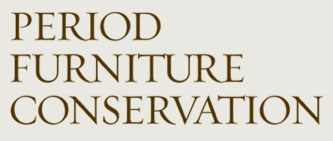WINTER 2016 ___________________________ In the Studio: An Art Work’s Environment
The January snowstorm in New York City, with over two feet of snow, brought back memories of the winter of 2015, which was particularly challenging for many art collections in the Northeast. During that period, an 18th century Diego and Evans English tall case red japanned clock had suffered significantly, and we were asked to conserve it. Today, after conservation, this beautifully painted object is prominently installed at the Museum of Fine Arts, Boston. Its ordeal, however, brings up a wide range of environmental issues that impact all works of art, irrespective of object, type, or medium.
Environmental Issues
Relative humidity, light, temperature, and biological predators are among the numerous factors that can accelerate an art object’s degradation. Unfortunately, they are also integral issues that many collectors are unaware of or take for granted, until a problem brings it to their attention. Being proactive is an important component of successfully managing an art collection. Relative Humidity
Even in a modern, temperature controlled environments, winter months in the Northeast can be challenging for wooden objects, since humidity levels are rarely taken into account. Wood is particularly responsive to changes in humidity, absorbing and releasing moisture, expanding and contracting. It is usually during extreme cold snaps, such as last winter, when heating systems run frequently, that relative humidity levels can easily fall far below 35%, putting sensitive objects at risk. At that level, detectable damage can occur, such as the loosening of structural joints, re-opening of splits, and delamination of painted and gilt surfaces. As per the photograph on the left, this was the case with the surfaces of the Diego and Evans clock: the wood substrate beneath the japanning had shrunk, and the painted coating began to lift off.
Light The ultraviolet radiation in natural daylight is deleterious to unprotected works of art and can cause irreversible damage. In the case of the Diego and Evans clock, one side was pale, having been bleached by the sun. Light exposure can also damage period textiles, such as upholstery, the delicate pigments of a pastel drawing, or urushi lacquer objects. In such circumstances, the first step is to carefully determine the light levels with a special light meter, and should they be intense, keep curtains, shutters, or shades drawn during the hours of maximum brightness. Another remedy is to apply UV light reducing film directly to the window glass.
Temperature
The optimal recommended year-round temperature range for a general collection is 50-72 degrees. Outside that range, or even with substantial fluctuations within it, degradation accelerates rapidly. Plastics, typically found on contemporary art objects, are especially vulnerable, since they can warp or become brittle. Collectors who are concerned with ensuring the longevity of their collections will keep the temperature toward the low end of the range.
Biological Predators
Molds, mildews, and fungi are not only toxic to humans but can be damaging to art objects as well. They typically thrive in moist, warm environments where there is little air movement, and can stain surfaces or etch coatings. Controlling humidity levels is an essential first step in addressing fungus or mildew damage. Insects are another natural predator that can decimate not only furniture but textiles. Powder post and furniture beetles, especially common in European objects, can be destructive to the structure of wood. The larvae of these beetles often live deep in the wood and feed on the fibers, emerging only when they become adults. Be on the lookout for exit holes or frass, the fine, dust-like product of insect activity. If you suspect an infestation, your furniture can be successfully treated with anoxic fumigation, a new service of our firm. A Conservator’s Approach The Diego and Evans tall case japanned clock was successfully treated over many months by carefully re-adhearing all of the loose japanning, which encompassed approximately 70% of the painted surface. In retrospect, had a stable humidity controlled environment and mechanisms for moderating natural daylight been in place, much of the damage to the clock could have been prevented. Your situation is most probably different. Preventive conservation is a complex subject, so please do contact us for a consultation. We can propose specific recommendations to ensure that your art collection retains its value and will be enjoyed for generations to come.
______________________________________________
Presenter: Yuri Yanchyshyn gave a presentation entitled "What Wood is That?: A Furniture Conservator’s Approach to Wood Identification" at the New York Microscopical Society on October 25, 2015
_______________________________________________
Anoxic fumigation - a new service: This fumigation approach utilizes an inert gas, argon, to kill insects. All major museums make use of this or similar approaches, since the alternative, a poisonous gas, lingers in the atmosphere for 30-40 years and contributes to global warming. Typically an object is placed in an airtight envelope over a period of six weeks with the air inside substituted with argon gas. This is a proven method appropriate for objects that contain wood as well as for textiles.
_______________________________________________ A recent article on furniture attributions: The February issue of Maine Antiques Digest published an article by Yuri Yanchyshyn entitled "Advances in Wood Identification and Thereby Attributions." It can be found here:
_______________________________________________ Yuri Yanchyshyn quoted: in Barbara Peck, “5 Reasons to Invest in Mid-Century Modern Furniture,” Investopedia, February 3, 2016. To access, go to _______________________________________________
Furniture Conservator Yuri Yanchyshyn has worked with wooden objects for over thirty years, from a cabinetmakers shop to the laboratories of The Metropolitan Museum of Art. Private collectors, museums, architects, and designers have all entrusted precious items from the 14th through the 20th centuries to Yuri’s care, and institutions such as Institute of Fine Arts Conservation Center invite him to lecture. Yuri holds degrees from the University of Michigan and the California Institute of the Arts and received advanced training from the Amsterdam Academy for Restoration and the Smithsonian Center for Materials Research and Education.
(c) 2016 Period Furniture Conservation LLC. All rights reserved. |











